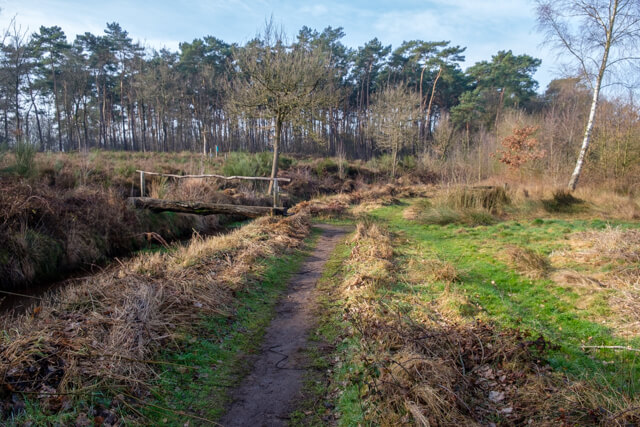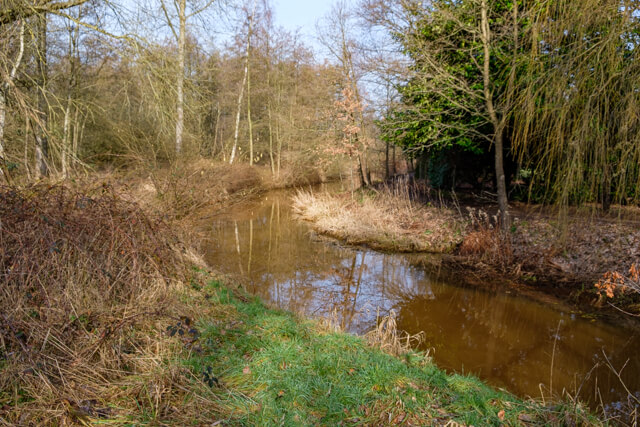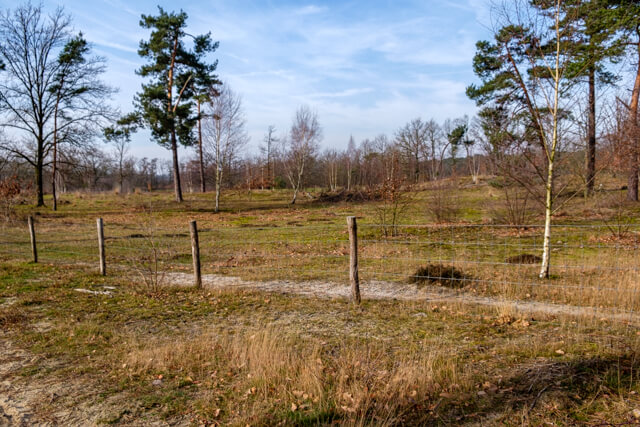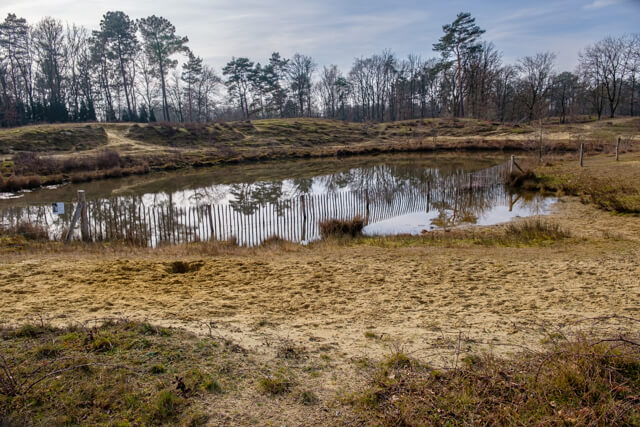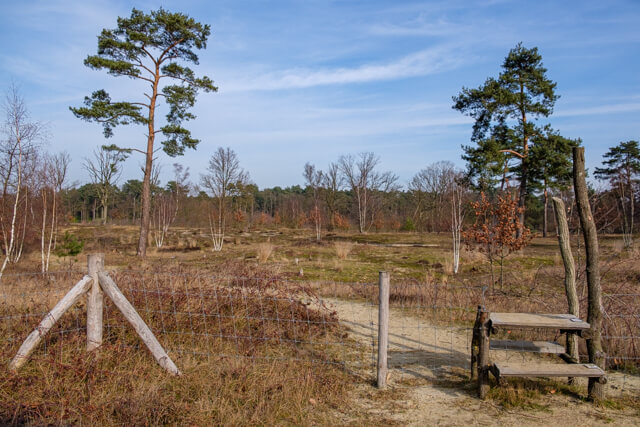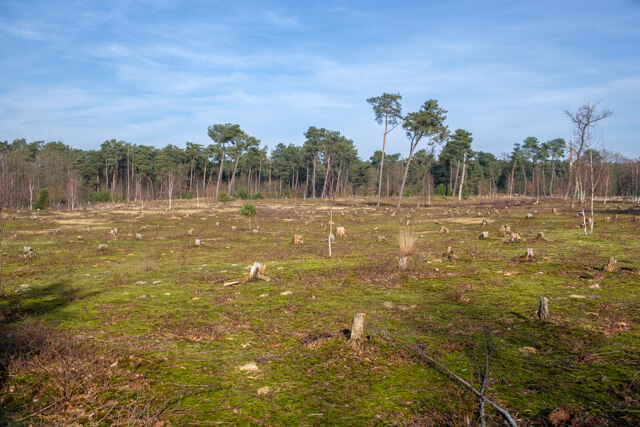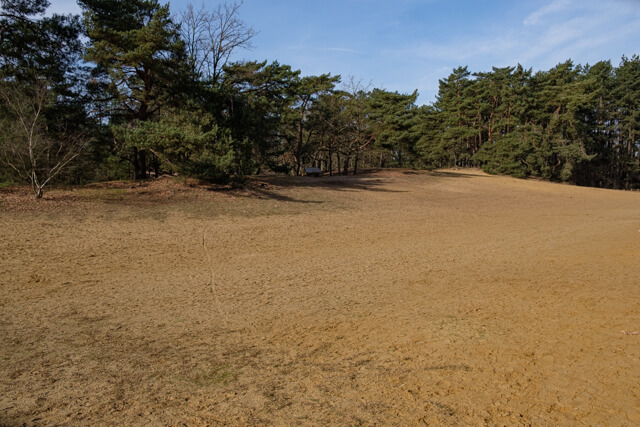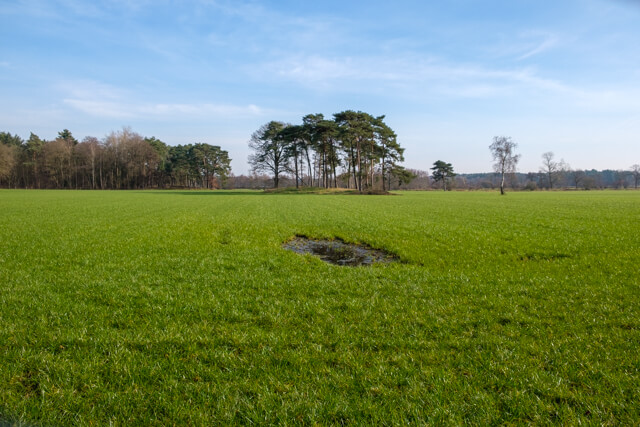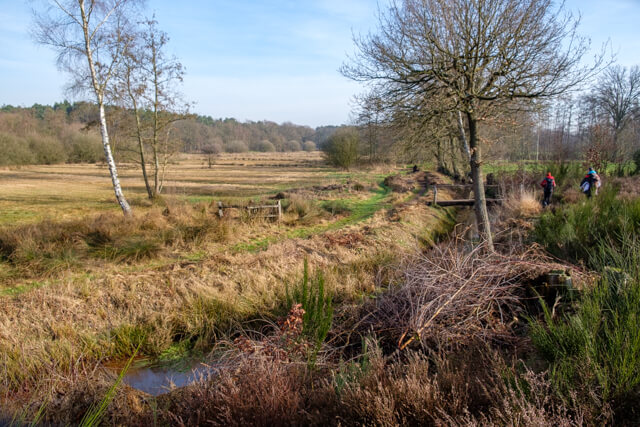
Walk in the Great Nete Forest through the nature reserve De Kwacht and De Hutten to the Belse Heide with heather fields and vast sand drifts. These natural pearls together with the Torfven, the Belse Bossen and the valley of the Grote Nete make a real highlight.
Distance: 12 km.
Time: 3h00.
Grade: Moderate.
Type: Circular.
Gps Track: Yes.
Route description: Yes.
Wheelchair: Not suitable.
Dog: Allowed.
Height gain: 56 meters.
Trail: 99% unpaved.
Marking: Walking nodes.
Hiking shoes recommended.
Advertisement.
Great Nete Forest.
From the starting point, you walk a bit through mixed forest to the De Kwacht nature reserve. The area is a marshy low moor along the Kwacht walk from where you can enjoy the panorama on the Hoge Kwacht. Through the De Hutten area, the route continues to the Grote Nete. You follow the river for a bit before heading towards the Belse Heide. Here, beautiful heather fields and vast sand drifts alternate. At Kapucienenberg, you can enjoy the view of ancient sand dunes. Through the Belse Bossen you walk back to the valley of the Grote Nete. Here, open landscape alternates with forest and at the Kruis Van De Hut you are almost back at the starting point.
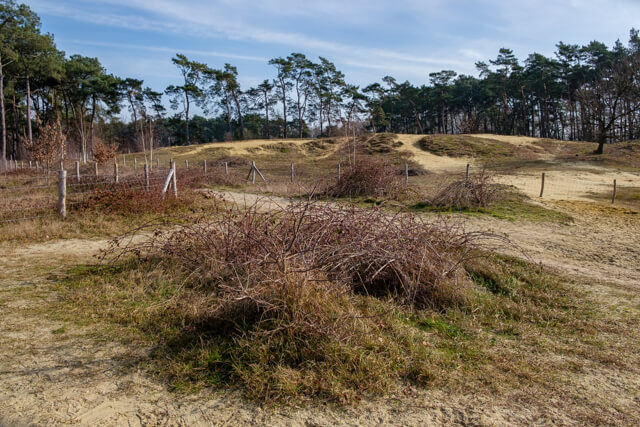
Download PDF for nodes to follow.
POI 1 - The Kwacht.
Between nodes 2 and 3, you cross nature reserve De Kwacht, a scenic gem where the contrast between the land dunes and the marshy low moor continues to fascinate. Enjoy from the bench on the 'Hoge Kwacht' the view over the 'Lage Kwacht'. The panorama is amazing!
No additional information.
POI 2 & 3 - Belse Heide.
On the dry sand ridges, you walk through vast coniferous forests, beautiful heathlands and vast sand dunes. Characteristic of this landscape are the land dunes that crop up, such as the Kapucienenberg.
No additional information.
POI 4 - Kruis Van De Hut.
Canon Barth from Westerlo belonged to the church council of St Dimpna's church in Geel. During the Austrian rule (1713 to 1794), he bought a lot of communal heath land in the area. During the Closed Period, the period around 1798 when no church services were allowed, he sought shelter in his Scherpensteen farmstead. He had the cross erected on the triangle which is popularly known as the cross of the hut. There was the large hut Scherpensteen and a slightly more distant small hut.
No additional information.



